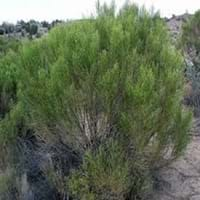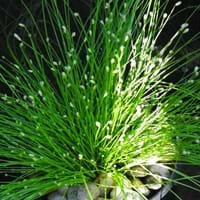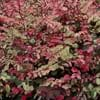Life Span
Perennial
Annual
Origin
Hybrid origin, Southwestern United States
Southern Europe, United Kingdom, Northern Africa
Types
Not Available
Not Available
Habitat
riparian zones, Semi desert, Upland
Grassland, Humid climates, Riverbanks, Wet forest
USDA Hardiness Zone
8-10
8-11
Sunset Zone
7, 8, 9, 10, 11, 12, 13, 14
7, 8, 9, 10, 11, 12, 13, 14, 15, 16, 17, 18, 19, 20, 21, 22, 23, 24
Habit
Spreading
Arching/Fountain-shaped
Flower Color Modifier
Not Available
Bicolor
Fruit Color
creamy white
Non Fruiting Plant
Leaf Color in Spring
Green
Green
Leaf Color in Summer
Green
Green
Leaf Color in Fall
Green
Green
Leaf Color in Winter
Green
Green
Leaf Shape
Oblanceolate , Ovate
Linear
Plant Season
Spring, Summer, Fall, Winter
Spring, Summer, Fall, Winter
Sunlight
Full Sun
Full Sun, Partial Sun, Partial shade
Type of Soil
Clay, Loam, Sand
Loam
The pH of Soil
Acidic, Neutral, Alkaline
Neutral
Soil Drainage
Well drained
Poorly Drained
Bloom Time
Spring
Indeterminate
Tolerances
Drought, Dry soil, Heat Tolerance
Drought
Where to Plant?
Ground, Pot
Container, Ground, Pot
How to Plant?
Seedlings
Seedlings, Stem Planting
Plant Maintenance
Medium
Medium
Watering Requirements
Needs very little water
Keep the ground moist but not water-logged, Requires regular watering, Water when soil is dry
In Summer
Lots of watering
Lots of watering
In Spring
Moderate
Moderate
In Winter
Average Water
Average Water
Soil pH
Acidic, Neutral, Alkaline
Neutral
Soil Type
Clay, Loam, Sand
Loam
Soil Drainage Capacity
Well drained
Poorly Drained
Sun Exposure
Full Sun
Full Sun, Partial Sun, Partial shade
Pruning
Cut back old stems to the ground, Remove damaged leaves, Remove dead branches, Remove dead leaves
Remove damaged leaves, Remove dead branches, Remove dead leaves
Fertilizers
can go long without fertilizers
All-Purpose Liquid Fertilizer
Pests and Diseases
Pests and diseases free
Red blotch
Plant Tolerance
Dry Conditions, Dry soil, Heat And Humidity
Drought
Flower Petal Number
Single
Single
Foliage Texture
Fine
Fine
Foliage Sheen
Glossy
Glossy
Attracts
Butterflies
Insects
Allergy
Unknown
Asthma, Skin irritation
Aesthetic Uses
along a porch, deck or patio, Beautification, Ground Cover, Showy Purposes, Wild gardens
Beautification
Beauty Benefits
Not Available
Not Available
Edible Uses
Sometimes
Yes
Environmental Uses
Air purification
Air purification
Medicinal Uses
anti-inflammatory, Anti-oxidant, cholesterol-lowering
Digestion problems, Fever
Part of Plant Used
Twigs
Whole plant
Other Uses
Can be made into a herbal tea
Showy Purposes, Used as Ornamental plant
Used As Indoor Plant
No
Yes
Used As Outdoor Plant
Yes
Yes
Garden Design
Groundcover
Bog Garden, Container, Edging, Rock Garden / Wall
Botanical Name
BACCHARIS 'Centennial'
ISOLEPIS cernua
Common Name
desert broom , broom baccharis , greasewood
Low Bulrush
Slender Clubrush
In Hindi
desert broom
फाइबर ऑप्टिक घास
In German
Wüste Besen
Lichtwellenleiter-Gras
In French
desert broom
Fibre optique Herbe
In Spanish
escoba del desierto
Hierba de fibra óptica
In Greek
desert broom
Οπτικών Ινών Grass
In Portuguese
vassoura do deserto
Fibra Óptica Relva
In Polish
desert broom
Światłowody Trawa
In Latin
desert broom
Fiber opticus Grass
Phylum
Magnoliophyta
Not Available
Class
Magnoliopsida
Not Available
Family
Asteraceae
Cyperaceae
Clade
Angiosperms, Asterids, Eudicots
Angiosperms, Commelinids, Monocots
Tribe
Astereae
Not Available
Subfamily
Not Available
Pooideae
Number of Species
Not Available
Importance of Desert Broom and Fiber Optic Grass
Want to have the most appropriate plant for your garden? You might want to know the importance of Desert Broom and Fiber Optic Grass. Basically, these two plants vary in many aspects. Compare Desert Broom and Fiber Optic Grass as they differ in many characteristics such as their life, care, benefits, facts, etc. Every gardener must at least have the slightest clue about the plants he wants to plant in his garden. Compare their benefits, which differ in many ways like facts and uses. The medicinal use of Desert Broom is anti-inflammatory, Anti-oxidant and cholesterol-lowering whereas of Fiber Optic Grass is Digestion problems and Fever. Desert Broom has beauty benefits as follows: Not Available while Fiber Optic Grass has beauty benefits as follows: Not Available.
Compare Facts of Desert Broom vs Fiber Optic Grass
How to choose the best garden plant for your garden depending upon its facts? Here garden plant comparison will help you to solve this query. Compare the facts of Desert Broom vs Fiber Optic Grass and know which one to choose. As garden plants have benefits and other uses, allergy is also a major drawback of plants for some people. Allergic reactions of Desert Broom are Unknown whereas of Fiber Optic Grass have Asthma and Skin irritation respectively. Having a fruit bearing plant in your garden can be a plus point of your garden. Desert Broom has no showy fruits and Fiber Optic Grass has showy fruits. Also Desert Broom is not flowering and Fiber Optic Grass is not flowering . You can compare Desert Broom and Fiber Optic Grass facts and facts of other plants too.





